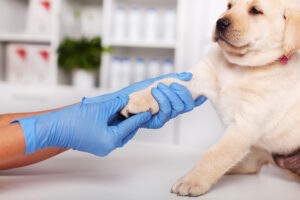
Fractures of the metacarpal and metatarsal bones are a major issue for our furry friends.
Pets are cherished members of our families, and it can be heartbreaking when they suffer an injury, especially one that affects their ability to walk or play. One common type of injury involves fractures of the metacarpal and metatarsal bones—essential structures in your pet’s paws. These fractures can impact mobility and quality of life, but with advanced veterinary care, recovery is very much possible.
Understanding Fractures of the Metacarpal and Metatarsal Bones
The metacarpal bones (in the front paws) and metatarsal bones (in the hind paws) act as the “bridges” between your pet’s toes and the rest of their limb. These slender, long bones bear a lot of weight during running, jumping, and daily activities. Unfortunately, they’re also vulnerable to fractures caused by accidents, falls, or even forceful impacts during play.
When these bones are fractured, your pet may exhibit symptoms like:
- Limping or refusal to bear weight on the affected paw
- Swelling and bruising in the injured area
- Visible deformity or abnormal paw alignment
- Pain and discomfort when moving the paw
Prompt veterinary attention is crucial. Untreated fractures of the metacarpal and metatarsal bones can lead to improper healing, chronic pain, and long-term mobility issues.
How Veterinary Surgeons Repair Fractures of the Metacarpal and Metatarsal Bones
The treatment approach depends on the type, location, and severity of the fracture. Veterinary surgeons typically begin with a thorough physical examination and diagnostic imaging, like X-rays, to assess the damage accurately.
Conservative Management (External Splinting or Bandaging)
For non-displaced or stable fractures—where bone fragments remain aligned—a splint or bandage can provide sufficient support while the bone heals naturally. This method helps maintain alignment and minimizes further injury during healing.
Surgical Repair
More complex or displaced fractures often require surgical intervention to ensure proper bone alignment and stability. Surgical techniques include:
- Internal Fixation: Small metal plates, screws, or pins are surgically placed to hold the bone fragments in place. This technique provides excellent stability, especially for active pets or larger dogs.
- External Fixation: An external frame is attached to the bones via pins that pass through the skin. This method is beneficial for fractures near joints or when soft tissue injury complicates the healing process.
Surgical repair of fractures of the metacarpal and metatarsal bones aims to:
- Restore normal paw alignment and function
- Minimize the risk of arthritis or deformity
- Enable faster and more reliable healing
Postoperative Care and Recovery
After the fracture repair, your pet’s paw will need careful management to ensure optimal healing. Postoperative care typically involves:
- Restricted activity to avoid putting excess strain on the healing bones
- Bandage or splint care to keep the area clean and dry
- Follow-up X-rays to monitor bone healing progress
- Pain management and anti-inflammatory medications to keep your pet comfortable
Recovery time depends on your pet’s age, health, and the complexity of the fracture.
Final Thoughts
While fractures of the metacarpal and metatarsal bones can seem daunting, modern veterinary medicine offers a range of effective treatments to restore your pet’s mobility and comfort. If you notice signs of limping, swelling, or paw pain, don’t delay—seek veterinary care as soon as possible. With proper treatment and loving care at home, your pet can get back on their paws and return to their happy, active lifestyle.
Trust Maryland Veterinary Surgical Services With Your Companion’s Health
Your companion’s health is important, and the team at MVSS is ready to provide the best care possible for your furry family. We are dedicated to combining comprehensive exams and assessments with informative and honest discussions of your companion’s care. Once we have worked with you to decide on the best course of action for your dog, our professionals will use their surgical expertise to work towards the goal of giving your companion an active and pain-free life. We are proud to serve loyal companions in Catonsville and Baltimore. To learn more about our services, give us a call at 410-788-4088 or visit us online. For more information and tips for dog health, follow us on Facebook and Pinterest.
